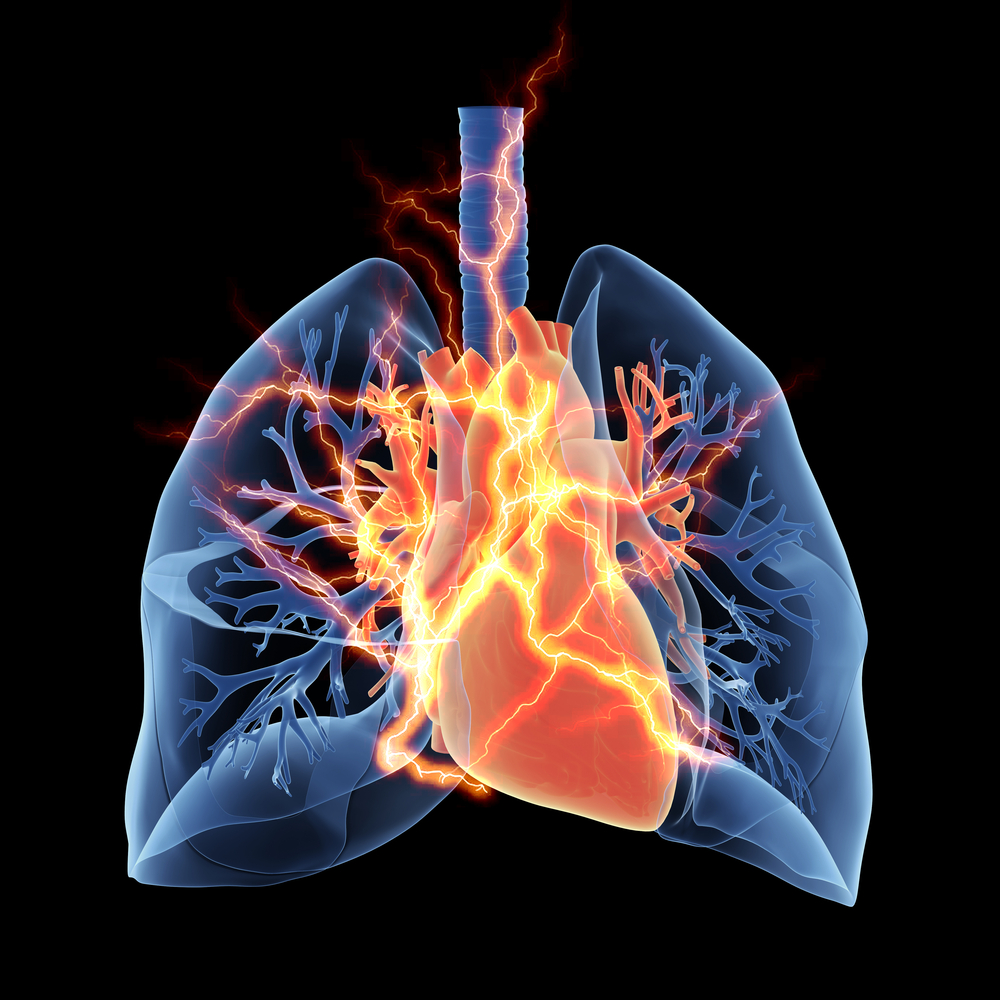PH Doubles Risk of Death in People with Tricuspid Regurgitation, Study Reports

Pulmonary hypertension contributes to markedly poorer outcomes and doubles a risk of death in people with moderate-to-severe problems in the heart’s tricuspid valve, a condition known as tricuspid regurgitation, a study from Europe reports.
The study, “Impact of pulmonary hypertension on outcome in patients with moderate or severe tricuspid regurgitation,” was published in the journal Open Heart.
The heart has four main valves that separate the atria, ventricles, and arteries, and regulate the blood flow inside the heart. Malfunctioning valves can have a severe impact on the ability of the heart to efficiently pump the blood to the lungs and throughout the body.
Tricuspid regurgitation (TR) is a common valve impairment, and researchers note that it is found on tests in nearly 300,000 people each year in Europe. In TR, the valve between the two right heart chambers — the right ventricle and right atrium — fail to close properly, causing blood to flow backward into the upper heart chamber (right atrium).
Blood pressure in the arteries that supply blood to the lungs is unusually elevated in people with pulmonary hypertension (PH), meaning the right side of the heart must work harder to efficiently pump blood. Although both TR and PH affect the heart’s right side, few studies have looked at their combined impact on patient outcomes.
A team led by researchers at Haukeland Universitetssjukehus, in Norway, reviewed a total of 12,791 echocardiograms — imaging test that allows to evaluate heart activity and blood flow – that were performed in a variety of patients at Guy’s and St Thomas’ Hospitals, London, in 2010.
The team found that 209 patients (1.6% of total; mean age, 72) had significant tricuspid valve impairment; 123 were classified as having moderate TR, and 86 with severe.
Patients with severe TR were more likely to have systemic hypertension, and bigger right ventricle and atria areas, while those with moderate TR had a higher prevalence of diabetes and lung disease, and a higher body mass index, a measure of weight.
More than half of these patients (66%) had PH, an analysis of systolic pulmonary artery pressure showed (SPAP), defined as SPAP equal or greater than 40 mmHg. PH prevalence was similar between moderate (63%) and severe (70%) TR patient groups.
During a median follow-up of 6.6 years (80 months), 59% of the patients died, with the mortality rate being similar between groups (61% in the moderate group and 56% in severe). Mortality was higher among people with tricuspid regurgitation and PH (67.4%), than it was in PH patients whose SPAP values were within a normal range (42.3%).
PH was also identified as a “powerful and independent predictor of all-cause mortality” in people with TR, more than doubling a risk of death (2.22 fold higher).
“The presence of significant TR was associated with a 6-year event-free survival [of] only 57% for both moderate and severe TR. However, PH rather than the grade of TR was the most powerful predictor of outcome,” the study reports.
Based on these findings, the team believes “efforts should be made to decrease pressure overload and volume overload by optimizing the management of heart failure according to contemporary recommendations.”
Additional studies are needed to also explore if tricuspid valve repair surgery, done early in this condition and paired with left-sided valve surgery, improves survival in people with less severe TR.







